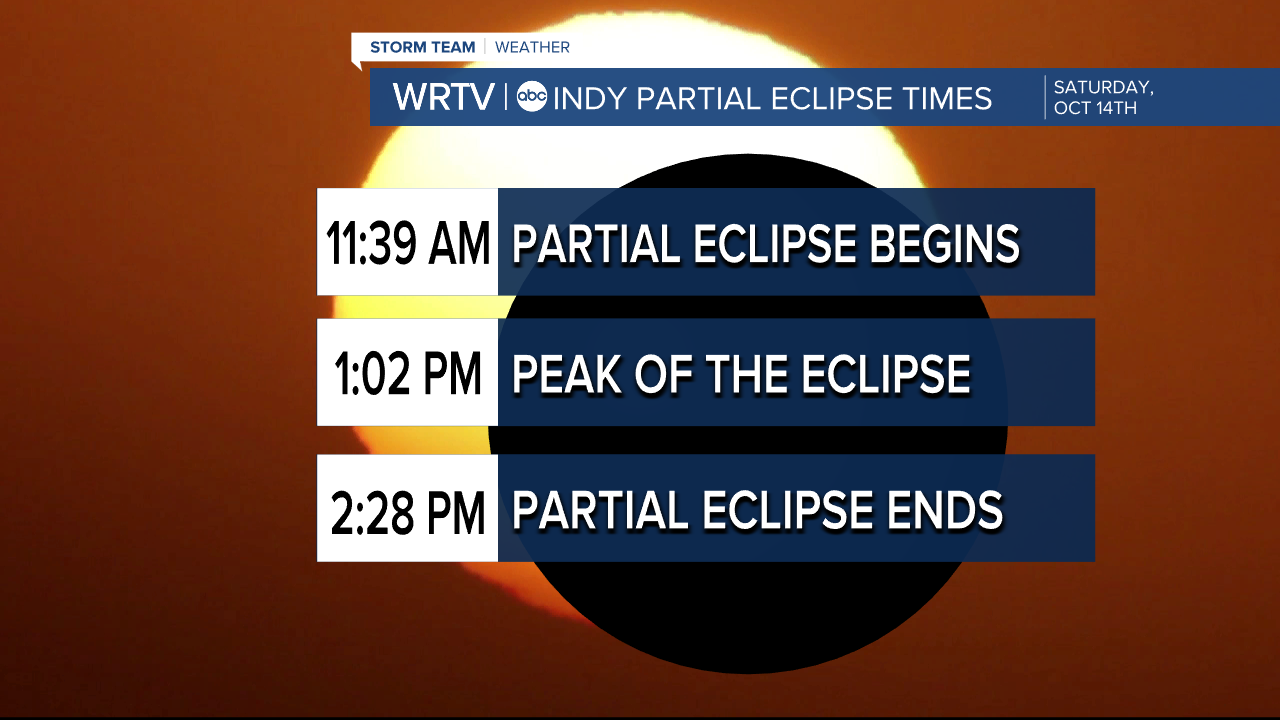INDIANAPOLIS — Anticipation and excitement are growing over a major celestial event. You couldn’t have timed it any better!
Brian Murphy, Director of Holcomb Observatory at Butler University, explains how lucky you are.
“Your chance of seeing one in your lifetime is about once in every 375 years," Murphy said. "This is the Super Bowl, The World Cup and the Tour de France all wrapped up into one event for Astronomy.”
A Total Solar Eclipse is roughly six months away!
Before the BIG event, you can practice your viewing skills this Saturday morning during a partial solar eclipse. The Western United States will have the more spectacular views this time.

The moon will pass between the earth and the sun starting at 11:39 a.m. At its peak, a little over 40% of the sun will be covered by the moon before ending around 2:30 p.m.

Next year’s eclipse is special. Indiana is in the prime viewing spot for a spectacular moment next April.

A Total Solar Eclipse will darken afternoon skies along a narrow path, approximately 115 miles wide, crossing 15 states from Texas to Maine including Indiana.
The Total Eclipse will be visible in the state from near the Ohio River north to roughly a Terre Haute to Ft. Wayne line.

“I've seen people at these eclipses with tears streaming down their eyes. That's how emotional it is,” Murphy said.
Clouds willing and with special protective eclipse glasses you’ll see the sun slip away behind the moon.
Murphy describes what to expect.
“As you go into totality, particularly the last ten minutes, that's when you really start to notice it get dark," Murphy said. "The streetlights come on. Insects start chirping. You might see birds go to roost. You finally get that last little bit of sunlight coming through, called the diamond ring effect, and then the shadow comes at you at 2,000 mph. The start come out, at least the brighter stars and planets. It’s an emotional experience.”







